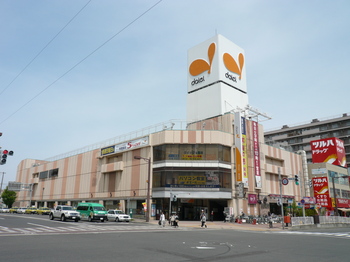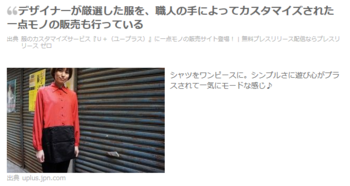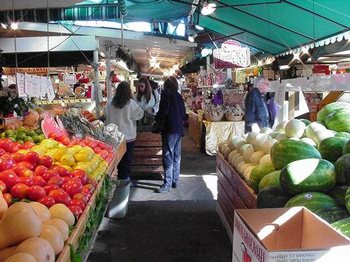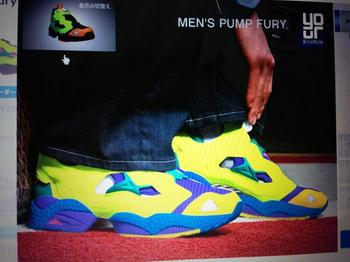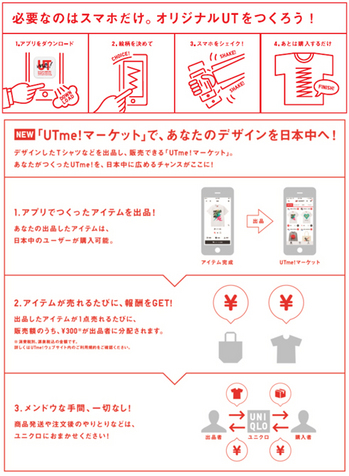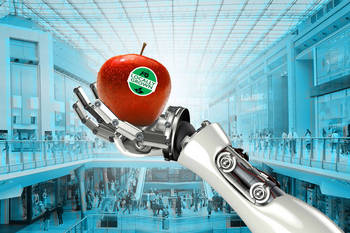買い物・小売のキーワードは「ライフスタイル」「hand made」「パーソナル」「近さ」
海外進出に特化したWEBマーケティング。はこちら。
ウォールストリートジャーナルから今後を考える
世界各地に存在する小売業は、各国の経済状況や、政策に瞬時に反応する業態といってもいい。日本においては、消費税の増税という、財政政策が実施されたとたんに、小売業の売り上げが約2ケタ以上も増加し、翌月は2ケタ以上も下落するという反応をする。
また、ネット企業の台頭により、リアルな小売業に至っては売り上げのシェアを大きく失うことになっている。日本においては、特にアマゾンや、楽天の影響は大きく、今後、リアルな小売業を考えた際に、今までの延長線上で物販をするだけでは、今後間違いなく生き残っていけない。
小売りは、社会の変化を反映する。存続する企業、良い企業は、社会の変化に適応しているかどうかで決まる。
人口動態、経済環境、政策、科学技術が小売りを変化させる。
具体的には、買い物の場所であったモールが生活全般のサービスを提供することになります。今まで小売業は、物販やテナントを事業モデルの中核においていましたが、今後はそのビジネスモデルも変えざるをえません。ハンドメイドといわれる職人が手作りするもの、つまり今までのような大量生産の商品ではなく、少量の稀少な商品に価値がみいだされます。
今までは、JANコードや型番が付いた商品を、どの小売業よりもいかに安く売るかという観点で、良い小売業、悪い小売業という評価がなされてきたかという感じもありました。
日本では、大量仕入れ、全国一律に低価格で販売をしてきた、ダイエーはついにイオンと統合し消滅することになります。
アパレル品は、ユニクロのSPAに代表されるように、工場製造、直接販売が当たり前になりますが、さらに、カスタマイズの要素が加わります。スマートフォンの浸透は、消費者をより身近にさせ、カスタマイズという、既製品から脱却した、新たな商品を消費者に提供できるようになります。
小売の変化を加速させるのが、
消費の主体がベビーブーマー世代からミレニアル世代に
シフトしているという変化である。ただし、
北米のミレニアル世代は、あまり移動せず、購買力も乏しいことから、
小売業界はこの変化に悪影響を受けるかもしれない。
ミレニアム世代とは
ミレニアム世代、新千年紀世代、Millennials、エコブーマーともいう。主にアメリカで1980年代から2000年代初頭に生まれた10代、20代の若者の総称。
特徴
幼い頃からデジタル機器やインターネットに接しているため、facebookやTwitterなどのSNSに積極的に参加している。デジタルネイティブと呼ばれることも多い。それまでの世代は個人主義の傾向が強かったが、ミレニアル世代は共同体への帰属意識が強く、社会奉仕やボランティアに積極的。97%が自分のパソコンを、94%が携帯電話を、56%がiPodなどのMP3プレイヤーを持っているという調査結果もある。
今後の小売・消費のには4つのトレンドがあります。
1.物販中心のビジネスモデルから、ライフスタイル全般の提供へ
2.手作り品、いわゆるハンドメイド、職人の逸品品の価値が高まる
3.自動化、カスタマイズ化するアパレル商品
4.スマートフォン、オムニチャネルで消費者にもっと近づく。
1.物販中心のビジネスモデルから、ライフスタイル全般の提供へ
従来のモールには、流行のアパレルショップ・書店・フードコートがメインテナントとして入居していました。これがガラッと変わり、物販・飲食サービスだけではなく、生活で必要とされるサービス全般を提供するようになると予想されています。具体的には、アパレル・家電・生活雑貨はもちろん、ジム・最新フィットネスセンター・医療サービス・学校・スーパー・高級スパまで取り込むようです。このようなインフラ化したモールは、騒動の多い新興国では、安全で衛生的であり空調の整った場所として重宝されているようです。世界的に、モールが生活全般のサービスを提供するインフラ化する傾向にあるようです。
出典:高尾亮太朗メルマガ
日本でもインターネットのサービスで、宅配クリーニングや、家事代行サービスといった本来ネットでは注文しづらかったサービスも浸透しています。リアルな小売業でサービスの拡充が行われることがあっても不思議ではありません。イオンなどの大型のショッピングモールでは既に、歯科医院や、1000円カットで有名な美容院がテナントとしてはいっています。
2.手作り品、いわゆるハンドメイド、職人の逸品品の価値が高まる
手作り品・職人の逸品は、工場ではない環境で作られるため、高くても売れています。手作りそのものがブランドであるため、コモディティ化も避けられます。この最たる例は、農作物の直売所(ファーマーズ・マーケット)であり、中間業者を排したのがその特徴。また、手作り品を売買できるサイトのエッティや、価格よりもイメージで買う要素が高い通販サイト・マレーズチーズなどは、手作り品をより身近な存在にしています。手作り品・職人の逸品は、今後小売にとって必需品となると予想されています。ただし、消費経済全体の15~20%しか占めないとされるので、市場規模はマスにはなりません。
出典:高尾亮太朗メルマガ
3.自動化、カスタマイズ化するアパレル商品
この変化によって、4つの変化が起きると予想される。
物販主体から生活サービス全般の提供にシフトするモール、
手作り品ブームの拡大、自分好みのデザインまでしてくれる
アパレルショップ、スマホの普及により
顧客の側までやってくる小売サービスである。
出典:高尾亮太朗メルマガ
4.スマートフォン、オムニチャネルで消費者にもっと近づく。
4.これらの変化から考えられるのは、
競争激化による集客コストの上昇、
大量生産品のさらなるコモディティ化、
機能よりもイメージ・ブランド重視、
実店舗に必須な体験・コト消費である。
出典:高尾亮太朗メルマガ
例えば、ユニクロは2015年04月28日 にこんなサービスを開始しました。以下プレスリリースより
自分でデザインしたTシャツをアプリ上で販売できる新サービス『UTme!マーケット』を開始
-スマホで簡単にTシャツがつくれるアプリ『UTme!』を刷新。選べるボディやカラー、エフェクトも豊富に-
ごくらく株式会社は、海外進出、インバウンド消費に特化したWEBサービスを構築します。
Illustration: Lou Beach for The Wall Street Journal
出典:THE WALL STREET JOURNAL
http://www.wsj.com/articles/the-future-of-shopping-1430105084
April 26, 2015 11:24 p.m. ET
Since we were hunters and gatherers, the human species has been going to markets.
Historically, retail is the dipstick of social change; what made a good store in 1600, or in 1900, or even 2000, and what makes a good store today are different.
Those differences are a reflection of the evolution of us. The changes have been about gender, or who we sell what to; economic circumstances; and, of course, technology, which has altered both our ability to understand and access goods.
of baby boomers to a millennial generation that is in its genetic prime: finding partners, having children and pumping up spending. But particularly in North America, that millennial generation is also battling downward mobility and the appetite for goods that many cannot afford.
Thirty years down the road, much of the change in retail is going to be driven by a complete reformulation of the relationship between how we make the stuff, how we sell the stuff and how we consume the stuff.
Four trends to watch:
Malls are becoming "alls."In the recent past, malls would begin and end with Contempo Casuals, Borders and french-fry-filled food courts. But this aging model has already started to transition into a fully functional lifestyle center. The mall of tomorrow will have all the apparel, consumer-electronics and general-merchandise options, but alongside it will be gyms and innovative fitness centers, medical services and even schools, grocery stores and luxury spas.
The mall across the world delivers an important experience in many emerging markets. The three key offerings are physical safety, a hygienic place and climate control. In a world where turmoil is unlikely to disappear completely even 30 years into our future, going to the mall will still have equity. We will go to the mall to be entertained and live our lives; to recreate, not just to shop.
The artisanal movement will flourish. Artisanal goods--stuff made in a nonfactory setting that we are willing to pay a premium for--are the new must-have. Call it the durability of craft; whether hand-knit sweaters or stinky cheese, homemade is cool again.
Homemade is a brand in itself; things we cannot commoditize. We see this piece of the future in the health of the farmers-market movement. Eliminating the middleman, the makers or farmers of stuff can find their markets and--if they work efficiently--make a modest living.
We see it also in Etsy, an online site where people buy and sell artisanal goods, and Murray's Cheese, an online business where acquisition is
crossed with a romantic element of consumption. Can we assume that 30 years into our future our computers will allow us not only to see but also to feel and smell the things we shop for? It is not out of the question.
This is also about the counter trend of being local. It is about a need to be different and nostalgic for things that are timeless and somehow
This is also about the counter trend of being local. It is about a need to be different and nostalgic for things that are timeless and somehow pure. How much will this market represent? Probably no more than 15% to 20% of our consuming economy. Access to the artisanal market is predicated on the financial resources to afford it.
Apparel in the future will be personalized-- and tailored to our unique proportions.The apparel factory of our future is robotic and compact. In Seoul, the epicenter of the digital world, we see the prototypes of that future shop where--on the showroom floor--you have a body scanner linked to a magic box that cuts, stitches and glues. What comes out the other side is simple and basic in 2015, but in it, we see our future.
Indeed, that combination of a personal shopping "bot" that knows all our measurements and manages our closet will take the guesswork out of lots of purchases and give us both customization and uniformity. Thus the distance between factory and point of sale could be a few feet or few miles, but not across the ocean. That shopping bot works both in store and online.
Mobile retail will have two means.First is the way our smartphones now link us to a digital e-commerce universe. The second definition is retail that comes to us. Both in the sense of a farmers market that opens once a week on a specific street corner, but also a new version of the peddler's wagon that finds us at the beach, the football game or on the street corner. It curates its goods and gets us at happy, if not vulnerable, moments.
Retail and shopping in the next 30 years will be an incredible evolution to watch. Yes, we still will be shopping 30 years from now. The merchants and chains of yesterday and today will be largely gone. Retail has always been about birth, life and death; and just as in organics, that death ends up as compost that regenerates.
Mr. Underhill is chief executive officer of Envirosell Inc., an international retail consultant, and author of, among other books, "Why We Buy: The Science of Shopping." He can be reached at
